How to Hang Wallpaper
You love the design, but what do you do next?
You love the design, but what do you do next?
Do you know how to wallpaper? Or is it all a bit of a mystery? Does the paste go on the paper or the wall? How do you match up a pattern? Is it easy to remove wallpaper, or will you have to call in an expert?
You can relax. All Graham & Brown wallpapers are easy to install, whether you hire a decorator or choose to do the task yourself.
This is because they are printed on what is often referred to as "paste-the-wall" wallpaper. This is the easiest way of hanging wallpaper right now – and all our papers have this technology, including our murals. In this article, we will look at everything you need, from the tools you'll need to hang wallpaper to how to get a perfect finish around fiddly parts such as sockets and light switches.
We’ll take you through the steps and answer your questions, giving you advice based on our years of experience in designing and making the finest wallpaper. And if you’re still not sure about any aspect of decorating your home, we’re always here to help.
CONTENTS
- TOOLS YOU WILL NEED
- PREPARE YOUR WALL
- LINE UP YOUR WALLPAPER
- APPLY WALLPAPER PASTE
- APPLY WALLPAPER TO WALL
- HOW TO WALLPAPER ROUND SOCKETS AND SWITCHES
- HOW TO WALLPAPER AN INTERNAL CORNER
- HOW TO WALLPAPER AN EXTERNAL CORNER
- HOW TO WALLPAPER AROUND A FIREPLACE
- FAQ'S
PASTE THE WALL VS OTHER WALLPAPERS
When you hang traditional wallpaper, you have to apply a diluted paste mix to the wall. This is known as ‘sizing’ and is done to prevent a porous wall from absorbing too much of the wallpaper paste when you hang your wallpaper and creates a stronger bond between the paper and the wall. Pasting the paper allows it to soften and relax, so it's ready to hang.
However, most modern wallpapers have moved away from this as it's time-consuming, requires additional equipment, and can affect the results if you get the timing wrong. The easier way to hang wallpaper is to use "paste-the-wall" wallpaper. Instead of applying paste to the paper, you apply it directly to the wall after your sizing layer has dried. This makes it quicker and easier to hang your paper, as the wallpaper is dry when you’re handling it.
Our wallpaper has a special backing paper, which means it doesn’t expand when wet. This means that, unlike traditional wallpaper, you don't need to soak it, and the paste can go straight on the wall.
There’s no need for a pasting table or letting pasted paper rest for a while to allow the fibres to expand, cutting decorating time in half. Wallpaper hangs dry from the roll, so it's easier to cut, unlike cutting wet paper.
Another advantage is that it’s easier to remove when you fancy a change.
HOW TO WALLPAPER
From making sure you have all the right tools to preparing the wall, the art of wallpaper hanging is all in the preparation. Once you’ve got everything in place, it’s actually a much quicker and simpler job than you think, especially if you use our paste-the-wall wallpapers. Let’s go through it step by step.
GATHER YOUR TOOLS
TO PREPARE YOUR WALLS, YOU'LL NEED THE FOLLOWING:
- Wall Filler
- Sandpaper
FOR INSTALLING THE WALLPAPER:
- Sharp craft knife and or,
- Wallpaper scissors (to cut the paper)
- Wallpaper paste
- Bucket - to mix the paste in
- Plumb line or spirit level
- Tape measure
- Paint brush or Roller and Roller tray - for applying the paste
- Wallpaper brush or smoother - for ensuring paper is stuck down
- Seam roller - to ensure seams are level
- Clean damp cloth - to clean off any paste on wallpaper surface or smooth seams
PREPARE YOUR WALL
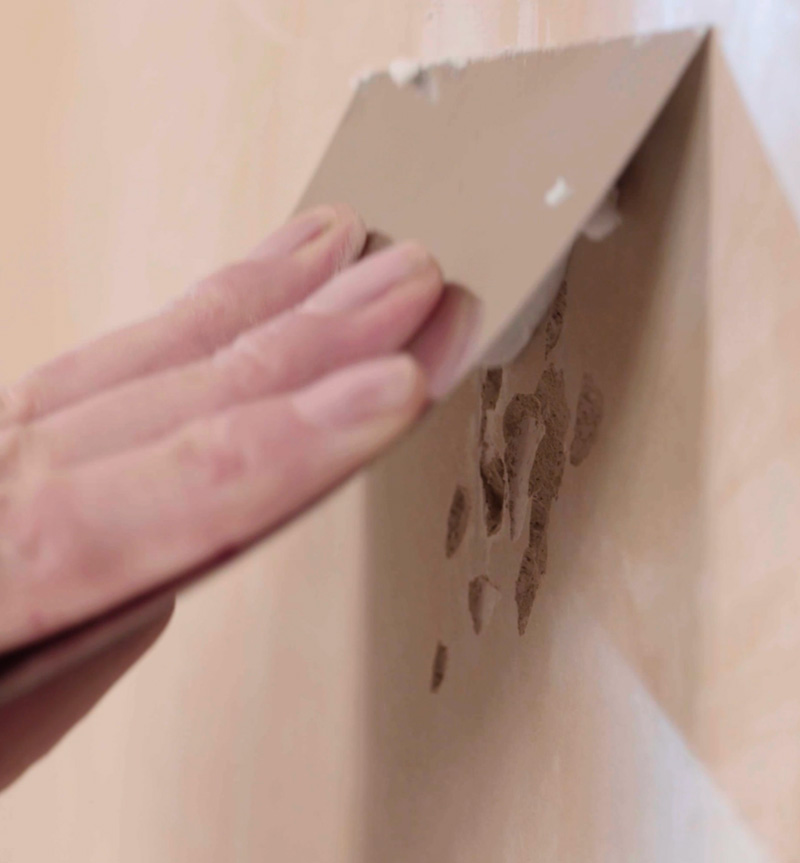
1. Fill and sand any cracks or imperfections on your wall.
2. Clean the wall with detergent or sugar soap.
3. On fresh plaster, “size” the wall with a diluted paste solution. Liberally apply to the walls being decorated and let it dry. This will soak into the porous plaster and stop the paste from being absorbed when applied.
MEASURE AND PLAN WHERE TO START
Consider the light in the room. If you are wallpapering the whole room, start with strong natural light and move away from there. If creating a feature wall, this is less relevant.
If you have a central focal point like a fireplace, take a look at the ‘How to wallpaper a wall with a fireplace’ below for a step-by-step guide to dealing with more complex walls and how to avoid offsetting your paper.
The first length or ‘drop’ of wallpaper is vital as all others will align to it, so it is essential to ensure it is ‘plumb’ (straight); otherwise your wallpaper could look wonky. It can also throw your pattern alignment out, which will get more pronounced the further you go into the process. If you get the first drop exactly right, the rest should line up perfectly without too much trouble.
TOP TIP
The reason for this is that a roll of wallpaper is 52/53cm wide. It means that the last drop you hang will go into the corner – which means if the wall is wonky or out – you can trim it in the corner, and it won't be noticeable.
From the left-hand corner of the wall you are about to decorate, measure 50cm and make a pencil mark to give you your starting point.
Using this mark, draw a plumb line using either a plumb-bob or spirit level. A plumb line is a vertical straight line from which you will hang the first drop of wallpaper and ensure it hangs straight down.
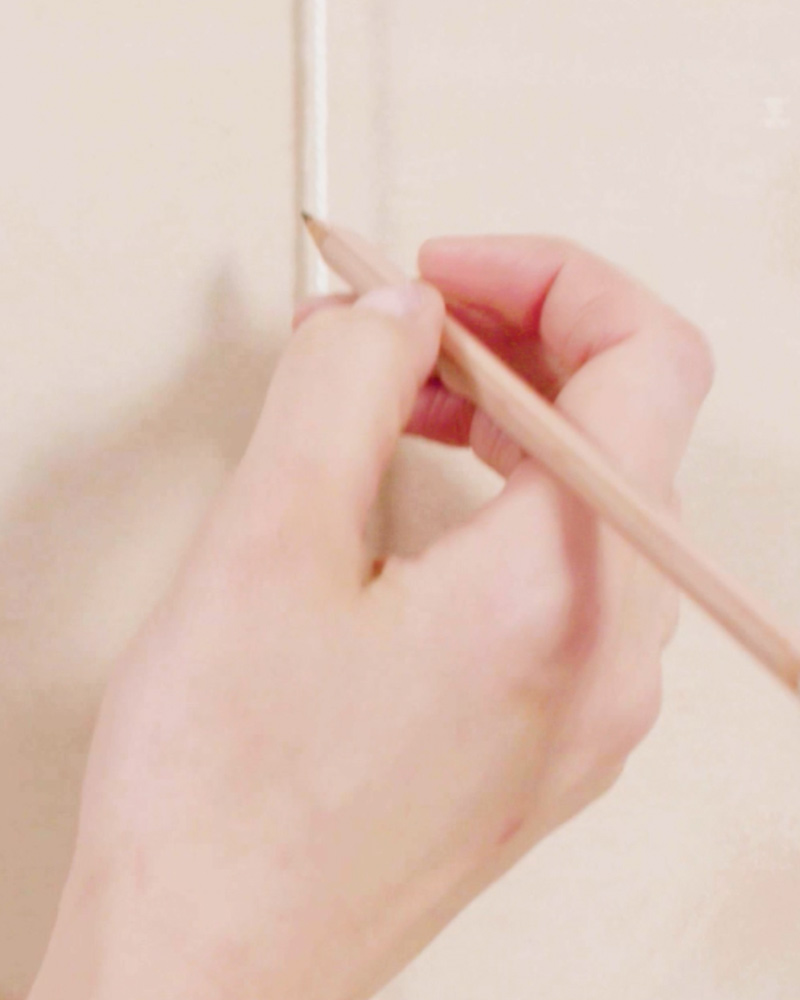
APPLY THE WALLPAPER PASTE
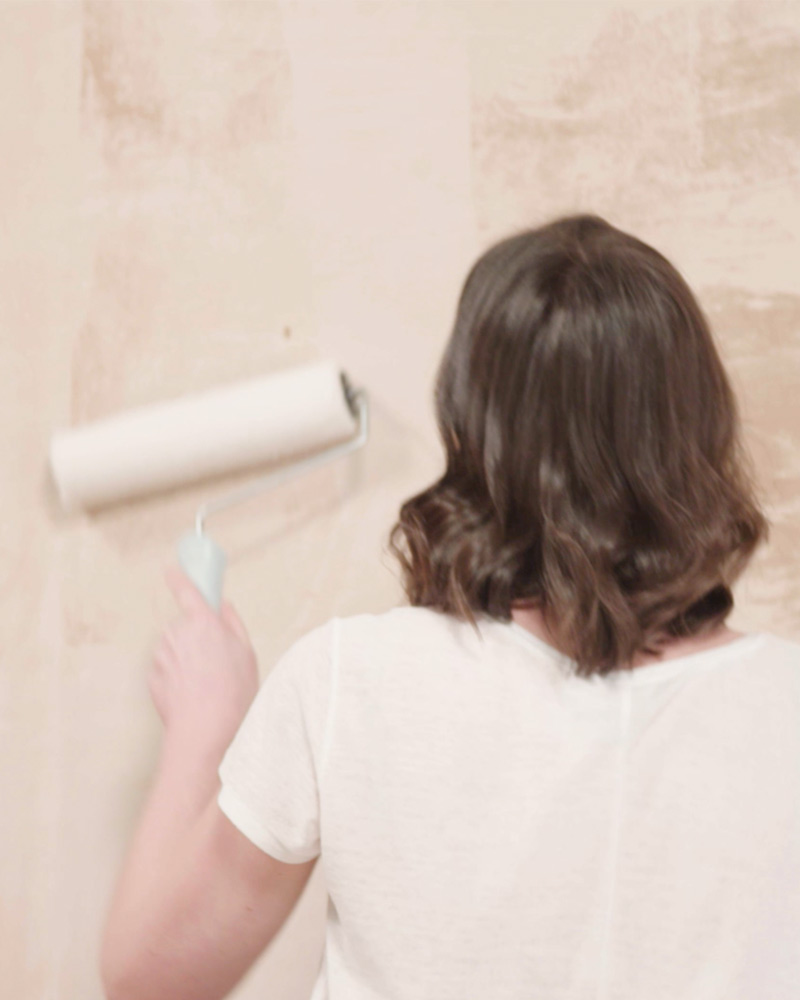
If you're using paste-the-wall paper, the process is straightforward. Apply the paste liberally to the wall, ideally with a roller (it’s quicker). You can paste over the plumb line and make sure you apply paste a couple of centimetres wider than the wallpaper you are about to hang. This means you can hang the second drop of wallpaper without worrying about applying the paste over the first drop.
Use a 2” paintbrush to add paste at the top of the wall, around sockets, or just above the skirting. This will ensure even coverage in difficult areas and avoid the wallpaper “lifting” when dry.
If you are using traditional wallpaper, you will need to cut your first drop to size and lay it flat on a pasting table. Apply the paste to the paper on the back side and ‘book’ the paper by folding it into a concertina shape. The pasted side should touch while the patterned side stays dry. Allow the paper to rest for a while – the time will be specified on the roll. This allows the paper to soften and makes it easier to hang.
APPLY THE FIRST DROP TO THE WALL
With paste-the-wall products, the wallpaper can be hung dry from the roll. Use ladders to get to the ceiling or coving, and allow a little extra product, e.g. 2-3cm at the top. As you hang from the roll, lightly brush into place as you go down to the skirting board. Here you can gently push the paper to the wall. Leave the roll on the floor.
Ensure that the paper is in the correct position and is vertically correct. Brush down the paper with the smoothing brush from the centre to the edges of the roll. Cut the excess paper at the top and bottom with a knife or wallpaper scissors.
If you're using traditional paper, pick up the concertina of paper by the corners and position them carefully at the top of the drop. Allow the paper to unfold gently, smoothing it against the wall surface as you go. Trim the paper to size - careful not to cut it too short.
TOP TIPTrim the top of the paper in line with where the ceiling and the wall or coving meet. If this is uneven, you will get a neat finish.
Congratulations, You've just hung your first piece of wallpaper!
HANG THE REST OF THE WALLPAPER
Working to the right of this first "drop", paste the wall again, allowing a few centimetres wider than the width of the wallpaper. You should see you don't need to get close to the first drop of paper when doing this.
For the second drop – look to see where the paper matches (the point at which the design fits together along the edges of the wallpaper).
Starting at the top, match the paper as you hang it dry from the roll – lightly brushing the paper to the wall as you go. The paper will slide into place on the paste.
TOP TIPYou can cover your paste bucket with cling film to keep it fresh overnight.
When you get to the bottom of the wall – check the pattern matches and that there are no gaps. If there are bubbles or mismatches, loosely pull the paper back and brush it back down. You’ll find that paste-the-wall wallpaper is remarkably forgiving! If it matches, you are nearly there.
Repeat until you’re done. Don’t worry about taking breaks or giving up for the night. You can pick up wherever you left off – just make sure to reapply the paste.
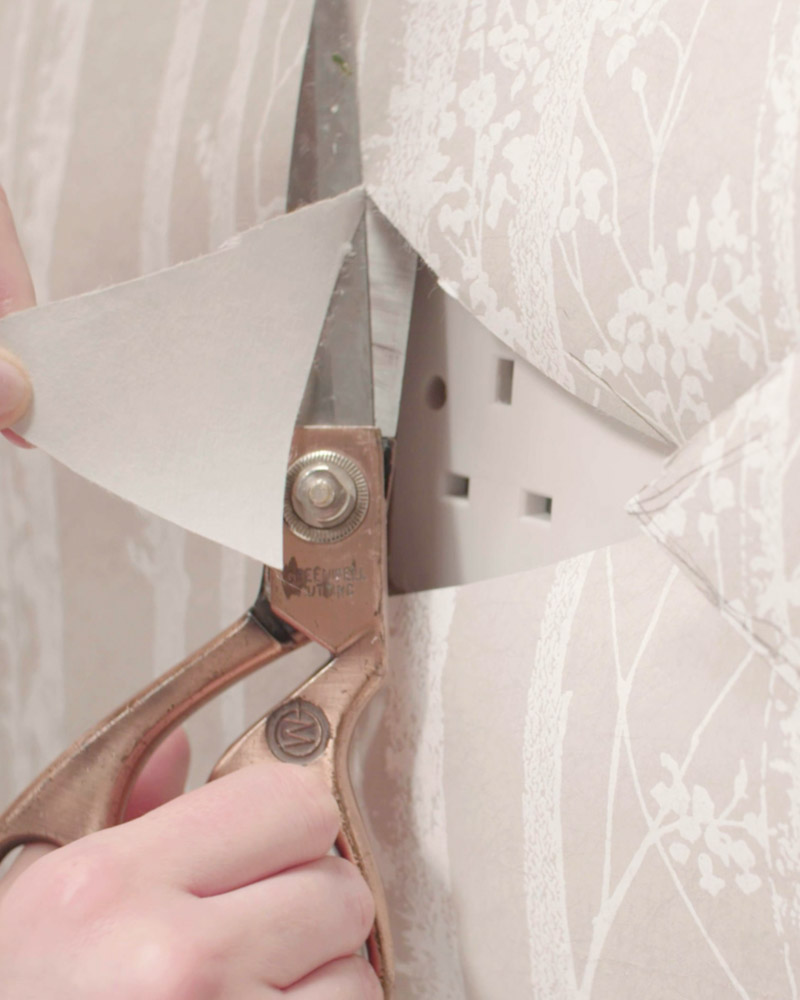
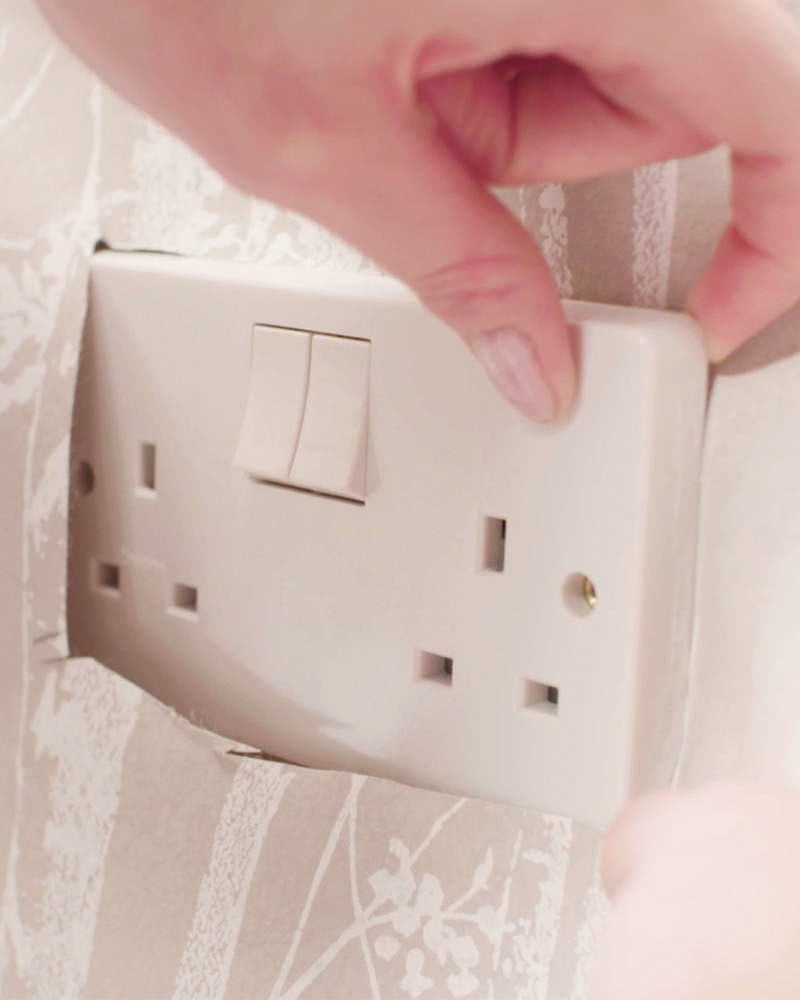
HOW TO WALLPAPER AROUND LIGHTS AND SOCKETS
Not every wall is perfectly smooth, and you'll likely meet some challenges along the way. The most common obstacles to a perfect wallpaper finish are light sockets, switches, corners and fireplaces. There are easy techniques you can use to get a professional finish, so let's start with the most likely challenge you'll encounter – light sockets and switches.
1. Switching off the mains power in your home before starting is essential.
2. Unscrew the socket and pull away from the wall a centimetre.
3. Paste the wall as previously (which is why you need to turn the electrics off – water + electricity is not good!) and smooth the wallpaper into place.
4. When the wallpaper meets the socket, try to hang the paper over it. The socket will protrude under the paper. Mark the four corners of the socket on the paper and score an "X" diagonally, joining the corners and taking care not to damage the faceplate of the socket.
5. Using your knife or scissors, cut along the two lines that form the "X" and peel back from the centre point to reveal the socket underneath.
6. You should now have four upstanding triangles on each edge. These can be cut down, and any excess paper can be pushed behind the socket fitting to ensure a seamless finish. The socket can then be screwed back down.
HOW TO WALLPAPER AN INTERNAL CORNER
Internal corners can be challenging, but the trick is to take your time, measure carefully, and use a sharp blade to trim off the excess as neatly as possible.
1. Paste the wall as before into the corner and a little way around.
2. Match the left edge as previously and brush the wallpaper into the corner and around it. There is a good chance the corner will not be perfectly vertical. You will only need to go around the corner with the paper by approximately 2-3 cm or until the wall is vertical again.
3. Remember, when you started your first drop, you hung the first piece 50cm out from the corner? Do the same here – or match up to that line – overlap the paper. This means in the corner, the paper will overlap. This is ok – and could be left to dry, but for a professional finish, you should take an extremely sharp/fresh blade and, using a steel straight edge, cut the papers where they overlap.
4. Remove the excess off the top paper, then peel the top paper back and remove the excess from the bottom paper.
5. Now push the top paper down – it should match and meet perfectly with the bottom paper and join like two seams of wallpaper. This is the reason to do it in a corner, so any potential mismatches do not show.
6. Internal corners will depend on the room. If you’re lucky, you may not have more than one or two internal corners to tackle. But if you live in an older property with lots of nooks and crannies, you may have several internal corners. Take your time, don't rush the job, and go through each step methodically to get a perfect result.
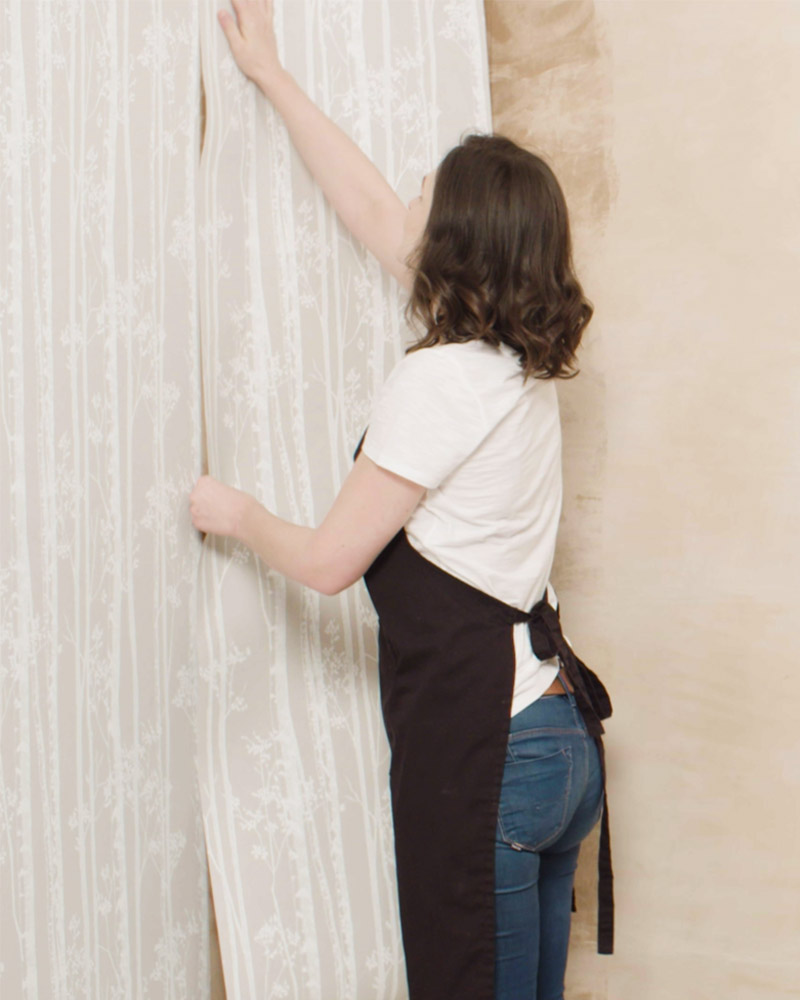
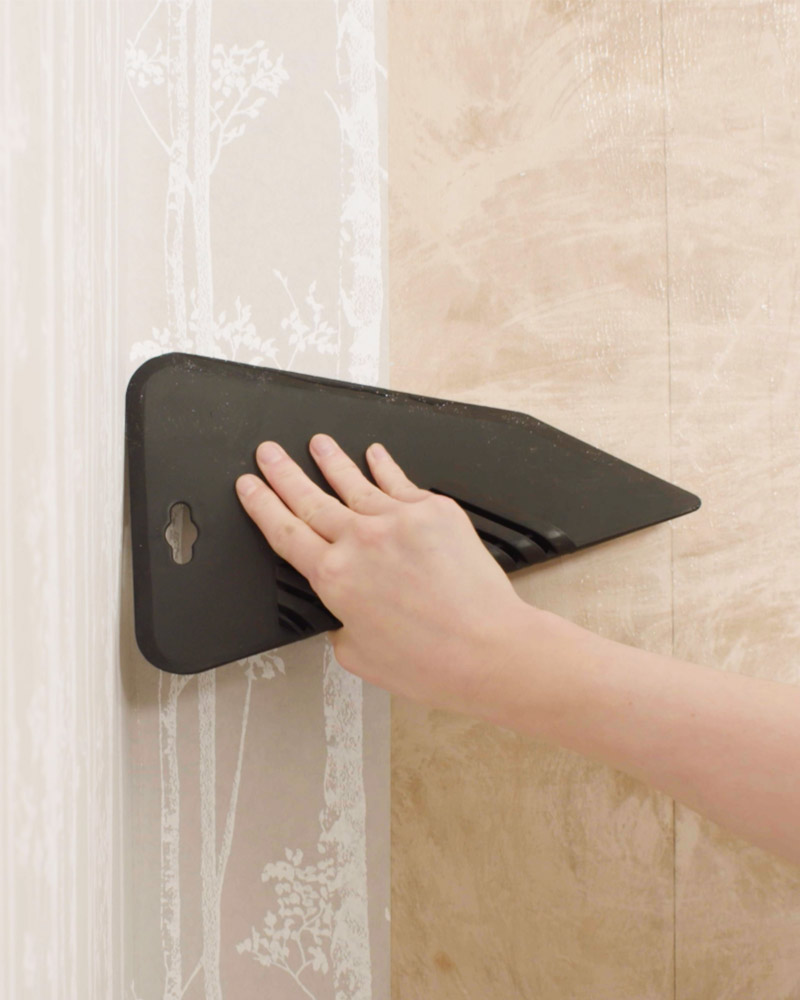
HOW TO WALLPAPER AN EXTERNAL CORNER
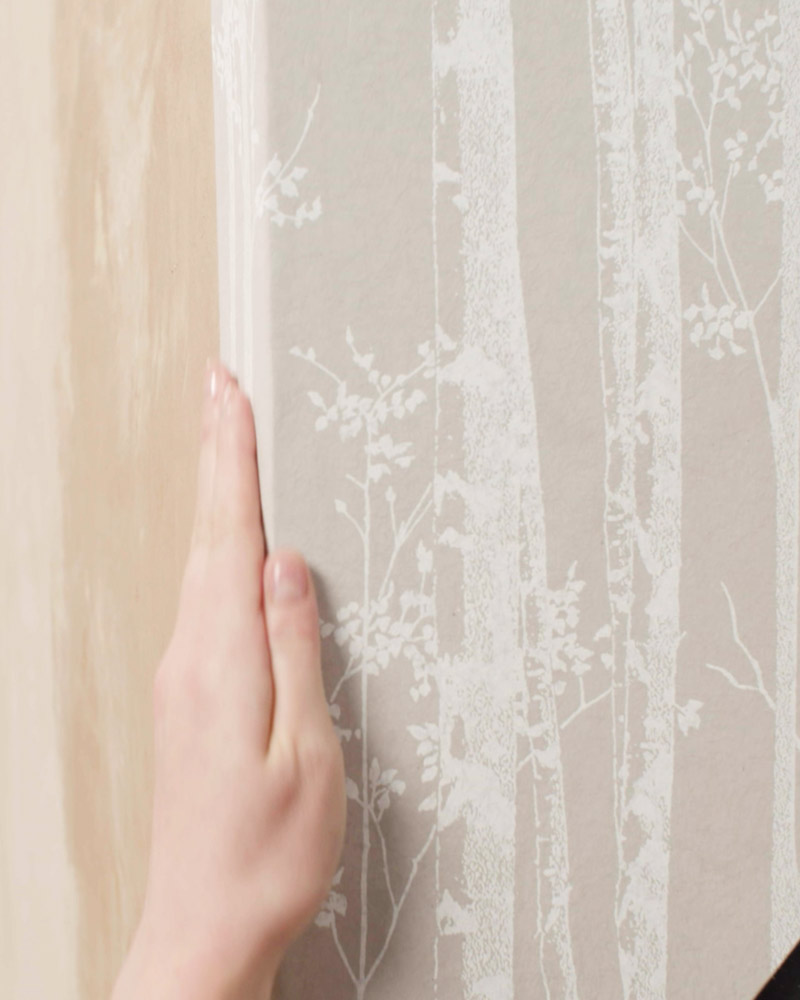
External corners are a little more straightforward than internal ones, but it’s still important to take your time and double-check your measurements so that everything lines up correctly.
1. As you hang the piece on the wall, wrap it around the corner. Again, the wall may not be ‘true’, so some overlapping may be required.
2. Follow the overlapping instructions and ensure that the overlap is not in sight but around the corner.
HOW TO WALLPAPER A WALL WITH A FIREPLACE
Not every home has a fireplace, but if you do, your wallpaper must be hung correctly. Unlike sockets and plugs, you can’t remove a fireplace and then put it back again afterwards, so you will have to work around it.
1. A fireplace is a focal point, so it is essential that you get the wallpaper design centralised, or you may get some strange optical effects of the pattern or fireplace being offset.
2. Rather than starting from a corner – find the centre point of the fireplace and mark it – and from here, draw your plumb line through it – (See above).
TOP TIPNot all patterns run centrally through a roll, so you may have to judge the centre of the design and work that distance out from the centre point of the fireplace.
3. You now have a choice. To centralise the design or to centralise the seam. To centralise with the seam in the middle of the fireplace, hang to the right of the plumb line to the corner of the room as normal, then work from the plumb to the left to the corner.
4. To centralise the design (which we recommend), measure a new plumb line half the width of the wallpaper to the left of the centre line (usually 26 to 26.5cm). Hang the wallpaper to the left of this plumb line as previously. The centre of the wallpaper will now be at the centre of the fireplace.
FREQUENTLY ASKED QUESTIONS
WHAT IS THE BEST PASTE YOU RECOMMEND?
Wallpaper paste is pretty generic, so it doesn't matter what brand you use as long as it's the correct type for traditional or paste-the-wall wallpaper.
WHAT IS 'PASTE-THE-WALL'?
This is exactly what it says – rather than applying paste to the wallpaper, you put the paste on the wall and hang your wallpaper ‘dry’ from the roll. It’s easier, quicker, and less messy!
DO I NEED A PASTING TABLE WHEN USING PASTE THE WALL?
No, although it may be helpful for rolling out and cutting your drops, putting your tools on, and somewhere to rest your cup of tea! However, as you can hang straight from the roll, it isn’t an essential piece of equipment when you’re hanging paste-the-wall wallpaper.
HOW MUCH QUICKER AND EASIER IS PASTE THE WALL TO HANG?
Much easier and quicker! Not only can you cut straight from the roll, but you don’t need to let the paste soak into the wallpaper as you do with traditional papers. This can cut the time it takes to wallpaper a room in half.
HOW MUCH OF THE WALL SHOULD I PASTE?
Paste the area you're covering with wallpaper. The easiest way to do it is to use a roller. Paste a couple of centimetres wider than the width of the wallpaper to avoid pasting over the previous drop.
WILL I BE ABLE TO SEE THE PASTE ON THE WALL?
Possibly, but it really shouldn't matter too much as you're doing a strip at a time and not covering the entire wall with paste.
CAN I USE PASTE THE WALL PRODUCT OVER LINING PAPER?
It’s not necessary to do that, and in fact, it’s much easier to use the paper ‘dry’ from the roll as it’s easier to handle and easier to cut.
WILL IT SLIDE EASILY FOR PATTERN MATCHING ETC?
Yes. The paste allows the paper to slide into position so you can make sure your patterns align perfectly.
CAN I HANG A BORDER OVER PASTE THE WALL PRODUCTS?
Yes, borders work perfectly fine with paste-the-wall wallpapers.
DO I NEED TO SIZE A WALL IF USING PASTE THE WALL PAPERS?
Yes, especially if your wall is plastered or is plasterboard. Sizing uses a diluted mix of paste to cover the whole wall. This prevents porous walls from absorbing too much moisture from your thicker wallpaper paste, which in turn could prevent the paper from adhering to the surface of the wall properly. Allow sizing to dry before starting your wallpapering.
SHOULD I HANG LINING PAPER HORIZONTALLY OR VERTICALLY?
Professional decorators hang lining paper horizontally. This is called cross lining and prevents the seams of the lining paper and the seams of the wallpaper from being in the same position. It gives a smoother, more professional finish but can be a little tricky to master. If you don't want to crossline your lining paper, ensure that the seams are slightly to one side of the seams in your wallpaper. Lining paper is slightly wider than wallpaper, so you should be able to achieve this relatively easily.
CAN I USE A COLOUR-MATCH PEN TO MAKE ANY VISIBLE SEAMS DISAPPEAR?
You can, but you need a very steady hand to do it! And you also need to be absolutely sure that your colour match pen does match your wallpaper. Remember that with patterned wallpaper, a colour-match pen won't always work as well as a single colour paper.